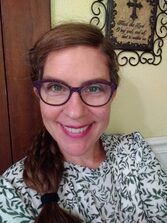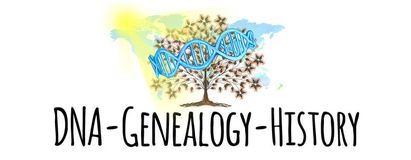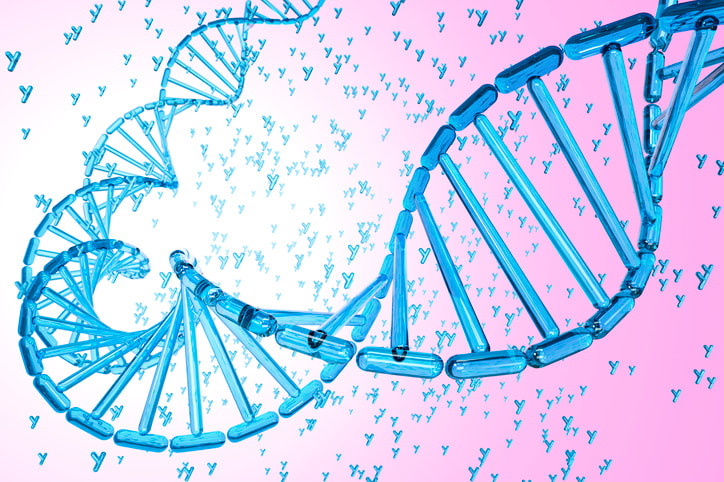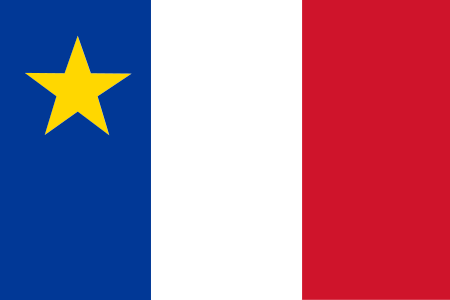Big Y 700 DNA test results yield new haplogroup branches and “Time Trees” for C-P39 Y DNA haplogroup and Germain Doucet b. 1641 descendants ... by Marie Rundquist with Deadra Doucet Bourke, Contributor February 22, 2023 Introduction
The discovery of the C-P39 Native Y chromosome DNA signature for genetic male descendants of Germain Doucet b. 1641, in 2008, had great significance for genealogists because the Native Y DNA signature attained for this line (1.) disproved a European ancestry for Germain Doucet b. 1641, (2.) disproved a father-son relationship between Germain Doucet b. 1641 and Germain Doucet Sr. of France and (3.) disproved that Pierre Doucet (b. ca 1621) and Germain Doucet (b. 1641) were blood brothers having descended from the same father. Through exhaustive Y Chromosome DNA testing of numerous male, paternal line Doucet / Doucete descendants of Germain Doucet b. 1641, who was from Port Royal, Nova Scotia, Canada, our Acadian-Amerindian and C-P39 Y DNA projects have uncovered, validated, and then verified a Native American Y Chromosome DNA haplogroup signature (originally referred to as haplogroup C3b and now referred to as haplogroup C-P39) for his descendants through sons Charles, Claude and Laurent. In 2019, the C-Z30754 single nucleotide polymorphism (SNP), or genetic marker, a subclade of the C-P39 Y DNA haplogroup, was identified as unique to genetic male, patrilineal (father to father) descendants of Germain Doucet b. 1641 through advanced Big Y 700 DNA testing. Y chromosome DNA is inherited through patrilineal line of descent and is passed, from one generation to the next, virtually unchanged, from father to father. Y chromosome DNA tests are separate test from mitochondrial and autosomal DNA tests and are for genetic males only. The C-Z30754 marker also identified a new subclade of the C-P39 Y DNA haplogroup to which male descendants of Germain Doucet b. 1641 belong. Genetic male descendants of Germain Doucet b. 1641 who have had advanced Big Y 700 DNA test show a positive result for this marker (C-Z30754+) and the C-P39 marker (C-P39+) in Big Y 700 DNA test results. Since the original identification of the C-Z30754 subclade as unique to the Germain Doucet b. 1641 surname lineage, new and unexpected branches, or subclades, of the C-Z30754 haplogroup have emerged among the Big Y 700 DNA test results of genetic male descendants of Germain Doucet b. 1641. Further study of these new branches, and the SNPs (or genetic markers) that identify them, reveal that each new branch aligns, one-for-one, with a known surname lineage through a specific patrilineal line – traced from father to father - within the Germain Doucet b. 1641 family tree. The purpose of this update is to show how all of this works – and introduce some fascinating new Big Y 700 DNA tools and capabilities we may all use for our own genetic genealogy research at the same time! Note: Click here to read the rest of the report -- and find out about some surprising new discoveries about Doucet DNA we came upon in our research! Past President of the Acadian Memorial, Marty Guidry, related some sad news about our late, Acadian cousin Paul Lewis LeBlanc whose last home was in Ascension Parish, Louisiana:
"Unfortunately, today I learned that Paul LeBlanc passed away on August 24, 2022. He had been in a full-care nursing home for over a year and died from complications of several health issues that he had during the past year." Paul Lewis LeBlanc, as many may recall, was keenly interested in the use of DNA to verify genealogical lines and, ever since I've known him (which was from about 2006 on), Paul was always happy to share his knowledge and research. Paul participated in and led a number of popular mail-lists and groups about genealogical subjects as well and I had the opportunity to meet him, face-to-face, when he attended one of my presentations in Louisiana. With Paul's permission, I had published an article about his surname line, which he had traced, and documented, from himself, to his father, and then to his father, and his father -- all the way back to Daniel LeBlanc of Acadia (b. ca 1626). He did this in conjunction with his Big Y DNA test results he had received in October of 2020. He was pleased to discover that he could prove his line genealogically and also through his Y DNA test results, which matched those of other men who shared his same patrilineal ancestor, Daniel LeBlanc, b. ca1626. Needless to say, I was very delighted (and somewhat relieved) to report that Paul LeBlanc's Y chromosome DNA matched with the Y chromosome DNA results, and the Y DNA haplogroup, established for other LeBlanc men who descended from Daniel LeBlanc. When you are dealing with a genealogist whose Y chromosome DNA is so tightly intertwined with his esteemed Acadian surname lineage, and so, his very soul, as was Paul's, waiting for a Y DNA test result to come in can be an anxious affair! Sometimes, we have a brief opportunity to hear a story and we have to take it down, and publish it, while it's there in front of us. This is precisely what happened with Paul. Paul gave me one shot to send his Y chromosome DNA sample off to Family Tree DNA for the Advanced Big Y 700 DNA test (done!) and then one more, very brief opportunity to publish some notes about his family history (and we did that too!). As we called for contributions from the Acadian genealogy community so that we could fund Paul's Big Y 700 DNA test, and later worked together to document his line, I felt like I was led by a guiding hand -- and Paul's insistent urging. Looking back, I believe Paul knew that time was of the essence. And so, we have the following article that resulted from these efforts (You are welcome to share the article as I had permission from Paul to do the same): https://dna-genealogy-history.com/travel-by-ancestry/travel-by-ancestry-to-the-big-y-dna-signature-r-ft55255-for-the-lineage-of-acadian-ancestor-daniel-leblanc-b-ca-1626 Since the article was published, we have gained over 2050 members in the Acadian Amerindian Ancestry DNA project (the image in the article is old), and we have extensive updates to the Y DNA "tree." While the work continues with more Big Y 700 DNA kits ordered for our project members just this week, the genealogy that comprises Paul LeBlanc's story, as written, remains constant, and this post is going to be one of the places where Paul Lewis LeBlanc is honored and remembered, and I do so tonight. May you rest in peace, Paul Lewis LeBlanc, b. 1946, d. 2022. From your cousin in Acadian Genealogy, --Marie Asse'lia Rundquist  Marie Rouensa descendant, Amy Meyer Marie Rouensa descendant, Amy Meyer Traditional mitochondrial DNA research of known matrilineal lines of descent from an earliest ancestor, Marie Rouensa, takes on a new dimension as autosomal DNA matches among descendants, shared segment triangulations, and most recent common ancestors are identified. The subject of Marie Rouensa's fascinating history, and the C4c1 haplogroup finding first discovered for Rusty Petitjean, along with his matrilineal line of descent from Marie Rouensa, in November of 2020 by our Acadian Amerindian Ancestry DNA project, were topics of conversation among the St. Landry Smith genealogy group members. The St. Landry Smith project had been started by Amy Meyer, a known descendant of Marie Rouensa. Deadra Doucet Bourke, who also participates in the group, shared the news about the discovery of Rusty Petitjean's matrilineal line of descent, since proven, from ancestor Marie Rouensa nearly two years ago. While Amy had formed the Smith project to research a Smith surname lineage from St. Landry, Deadra's story about mtDNA matches among matrilineal descendants of Marie Rouensa piqued her interest. Amy wanted to know more about the C4c1 mtDNA haplogroup subclade identified by Full Sequence mitochondrial (mtDNA) test results of two of her descendants, Robert Franklin and Rusty Petitjean. As Deadra explained project findings, Amy began to wonder if her mtDNA test results would qualify her as a member of the same C4c1 mtDNA haplogroup subclade to which Rusty and Robert belonged. Amy knew about her genealogical line of descent from Marie Rouensa, as did Robert Franklin before he had his mtDNA test. What would her Family Tree DNA Full Sequence mtDNA test results reveal? Unable to contain her excitement, Amy announced that she too was a descendant of Marie Rouensa! Pleasantly surprised, Deadra immediately shared a link about Rusty's line of descent from Marie Rouensa. (See: https://familyheritageresearchcommunity.org/rouensa-dna for the initial article and project updates). After reviewing the article, and scanning the lines that were posted for Marie Rouensa's matrilineal DNA descendants, Rusty and Robert, Amy was confident that her Full Sequence mtDNA test results would be in line with Rusty's and Robert's, and she has since been proven correct. All three Marie Rouensa matrilineal descendants belong to the C4c1 subclade and are exact matches with one another. Matching mitochondrial (mtDNA) test results for Amy, Robert, and Rusty may be referenced in the Acadian Amerindian Ancestry DNA Project. (See: https://www.familytreedna.com/public/AcadianAmerIndian?iframe=mtresults). Amy had already established her genealogy leading to Marie Rouensa through her own research, information contributed by a cousin, and Father Vidrine's tireless efforts in the realm of Marie Rouensa's family history, and had the Full Sequence mtDNA test and joined our project to honor and acknowledge the part that Marie Rouensa plays in her genetic makeup. Amy Meyer's genealogy, as follows, has been researched, scrutinized, and qualified so that other matrilineal descendants of Marie Rouensa may confidently connect to her line of descent: 1. Amy (C4c1) Singleton Meyer 2. Mother (C4c1) / Father 3. Edna (C4c1) Manuel / Hubert Paul Smith 4. Hermance (C4c1) Veillon / Leo Manuel 5. Edna (C4c1) Attale / Michael Veillon 6. Marie Ida (C4c1) Tate / Homer "Henry" Attales 7. Onesima (C4c1) Tate / William Tate 8. Eugenie (C4c1) Fontenot /Hilaire "Elie" Tate 9. Eugenie (C4c1) Soileau / Henri "dit Bellevue" Fontenot 10. Marie Jean "Marianne" (C4c1) Vidrine / Jean Baptiste "Richaume" Soileau 11. Elizabeth (C4c1) de Moncharvaux / Capt. Jean Baptiste de Vidrine 12. Marie Agnes (C4c1) du Chassin / Capt Jean Francois Tiserant de Moncharvaux (most recent common ancestor (MRCA)) 13. Anges (C4c1) "dite Philippe" Estienne / Nicolas Michel du Chassin 14. Marie (C4c1) "Ouacanteoua" Rouensa / Capt Michel "dit Philippe" Estienne 15. Marie Jeanne (C4c1) Indigenous Woman / Chief Francois-Xavier "Mamenthousena" Rouensa (earliest mtDNA-proven ancestor) Comment from co-author Deadra Doucet Bourke: Robert and Amy's ancestry comes together with Eugenie Soileau and Henri Fontenot (generation 9), Robert's through daughter Josephine, while Amy is through daughter Eugenie. All three come together on Marie Agnes du Chassin and Captain Jean Francois Tiserant de Moncharvaux (generation 12). Comment from co-author Marie Rundquist: Research continues to highlight the matching, and genetic relationships that may be derived by comparing members' mtDNA and autosomal DNA test results. Autosomal DNA comparisons will therefore continue to feature in our mtDNA project research. Comparisons among Amy's, Robert's and Rusty's autosomal DNA results, at a minimum of 5 cm, have yielded the following findings (Note: Amy had submitted her mother's autosomal DNA test results (from the same matrilineal line) used in this comparison): Comparisons of Amy's and Robert's autosomal DNA test results at a minimum of 5 cm Largest segment = 16.3 cM Total Half-Match segments (HIR) 36.1cM (1.006 Pct) Estimated number of generations to MRCA = 4.3 4 shared segments found for this comparison. 178930 SNPs used for this comparison. 50.653 Pct SNPs are full identical Comparisons of Amy and Rusty's autosomal DNA test results at a minimum of 5 cm Largest segment = 6.3 cM Total Half-Match segments (HIR) 27.4cM (0.765 Pct) Estimated number of generations to MRCA = 6.5 5 shared segments found for this comparison. 146089 SNPs used for this comparison. 52.184 Pct SNPs are full identical Comparisons of Rusty and Robert's autosomal DNA test results at a minimum of 5 cm Largest segment = 11.1 cM Total Half-Match segments (HIR) 76.2cM (2.123 Pct) Estimated number of generations to MRCA = 3.8 12 shared segments found for this comparison. 422218 SNPs used for this comparison. 70.215 Pct SNPs are full identical From the ISOGG.org Wiki, we read, "In autosomal DNA testing the term triangulation is most commonly used to describe the process of reviewing the pedigree charts of clusters of shared matches/in common with matches in order to identify a common ancestor or ancestral couple. This process is sometimes also known as tree triangulation." (See: https://isogg.org/wiki/Triangulation). In a near-perfect demonstration of the definition of triangulation, a comparison of Amy's, Rusty's and Robert's autosomal DNA yield a triangulated, 5.1 cm, shared segment, on Chromosome 1. Since hearing about the Marie Rouensa story, and the descendants who have had DNA tests to prove their lines that lead to her, Amy's cousin wants to find out more about the project and the journey of discovery that comprises the DNA test results, genealogies, and family histories that are needed to validate an ancestral line. The Acadian Amerindian Ancestry DNA project co-administrators invite all matrilineal descendants of Marie Rouensa to have the Full Mitochondrial Sequence mtDNA test from Family Tree DNA and to join our project! Click https://www.familytreedna.com/groups/acadian-amerindian/about to join! -- by Marie Rundquist, Deadra Doucet Bourke, with Amy Meyer Link to: https://dna-genealogy-history.com Link to: https://familyheritageresearchcommunity.org/rouensa-dna Link to: Rundquist, M., Bourke, D.D. (2020, November 1). Full Article: https://dna-genealogy-history.com/uploads/3/4/0/9/34098671/petitjean-serendipitous_c4c1_mtdna_finding-final.pdf Combining inputs from the Family Tree DNA Y-DNA database, ancient DNA, the Time to Most Recent Common Ancestor (TMRCA) algorithm, Dr. Carlos Quiles' research, the work of phylogeneticist Michael Saeger, population genetic studies worldwide, Family Tree DNA group projects, the Genographic Project, and the community, the Discover tool, trademarked by Family Tree DNA, references a target haplogroup label; e.g., C-P39 or other, which the user may search using a query form (see https://discover.familytreedna.com/).
The Family Tree DNA Discover tool (amazingly) projects the timeframes for the date of birth of an earliest known patrilineal ancestor, traced from father-to-father, who belonged to that same haplogroup and the tens of thousands of years that may have elapsed between upstream and downstream branches of his line. For example, the Discovery tool estimates that the first ancestor who belonged to Haplogroup C-Z30754 would have been born approximately 400 years ago (check!). Then, it provides estimated timeframes between intervening Big Y 700 branches, defined by leading SNPs (or markers) that separate C-Z30754 from the root, C-P39 Y DNA haplogroup that is estimated to have branched off from its parent subclade, some 11,000 years ago, plus or minus 2,100 years. Explore the features, referencing haplogroup C-Z30754, the signature, Big Y 700 DNA haplogroup attained for the descendants of Germain Doucet b.1641. Click: https://discover.familytreedna.com/y-dna/C-Z30754/story For information about the ground-breaking finding of Native American ancestry in the Doucet lineage tracing to Germain Doucet b. 1641 in 2008, and a chronology of Y DNA project updates, read the article, "Confirmed C3b Y DNA Test Results Test the Heritage of Cajun Cousin Keith Doucet" ...by Marie Rundquist with Keith Doucet. Thanks to all members for your participation in the C-P39 Y DNA Project, the Acadian Amerindian Ancestry DNA Project, and thanks also to the vast numbers of men who have taken the Big Y 700 DNA test, including the male descendants of Germain Doucet b. 1641. Your test results were immensely helpful in producing these estimates!!! |
Archives
June 2025
Categories
All
|
DNA-Genealogy-History.com Site Index:
Copyright 2025 Marie Rundquist., DNA Genealogy History, LLC
DNA Genealogy History, LLC is a registered S Corporation with the State of Virginia and the Federal Government since 2017, is a retailer and distributor of books and digital publications, and is certified, authorized and empowered to collect Sales and Use Tax for the Commonwealth of Virginia.
E-Mail Your Comments to [email protected]
This website is not intended for users located within the European Economic Area.
DNA Genealogy History, LLC is a registered S Corporation with the State of Virginia and the Federal Government since 2017, is a retailer and distributor of books and digital publications, and is certified, authorized and empowered to collect Sales and Use Tax for the Commonwealth of Virginia.
E-Mail Your Comments to [email protected]
This website is not intended for users located within the European Economic Area.




 RSS Feed
RSS Feed
